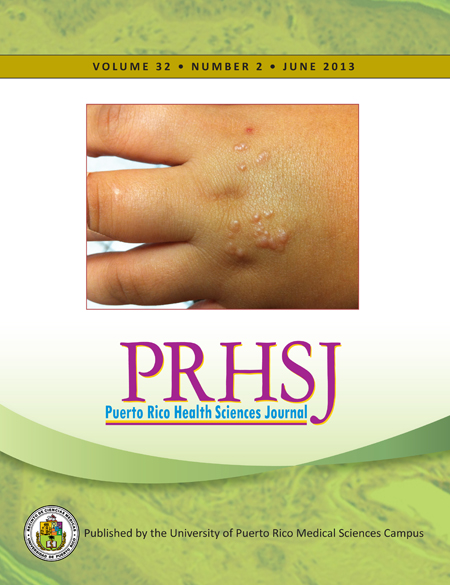Abstract
Objective: Stress can have deleterious effects on health and academic performance. Common stress-relieving activities among college students include the non-medical use of prescription drugs (NMUPD). The aim of this study was to determine the associations between self-perceived academic load and stress, NMUPD (stimulants, depressants, and sleeping medication), and dietary pattern in college students in PR. Methods: A questionnaire to evaluate academic load and stress, NMUPD, and dietary pattern was used on a representative sample of 275 first- and second-year students from one campus. Results: In total, 27.6% reported NMUPD in the past 6 months, with higher use among students aged 21-30 years (93.4%) than in those aged 31-53 years (6.6%; p=0.062). Those with high levels of stress had higher NMUPD (42.1%) than did those with low (26.3%) or moderate (31.6%) stress levels, after controlling for age and sex (p=0.03). Among those who reported NMUPD over the previous 6 months, 74% reported that such use was effective as a coping strategy, and 35% reported that it helped them to improve academic performance. Although no significant association was found between NMUPD and dietary pattern, 57% of the participants reported that their appetites decreased when they engaged in NMUPD. Conclusion: To our knowledge, this is the first study that has associated selfperceived academic load and stress, NMUPD, and dietary pattern among college students in Puerto Rico. NMUPD’s prevalence was 27.6%, which prevalence appeared to be higher in students aged 21-30 years than in those of any other age. High levels of stress were significantly related to high NMUPD in this sample.
Authors who publish with this journal agree to the following terms:
a. Authors retain copyright and grant the journal right of first publication with the work simultaneously licensed under a Creative Commons Attribution License that allows others to share the work with an acknowledgement of the work's authorship and initial publication in this journal.
b. Authors are able to enter into separate, additional contractual arrangements for the non-exclusive distribution of the journal's published version of the work (e.g., post it to an institutional repository or publish it in a book), with an acknowledgement of its initial publication in this journal.
c. Authors are permitted and encouraged to post their work online (e.g., in institutional repositories or on their website) prior to and during the submission process, as it can lead to productive exchanges, as well as earlier and greater citation of published work (See The Effect of Open Access).
